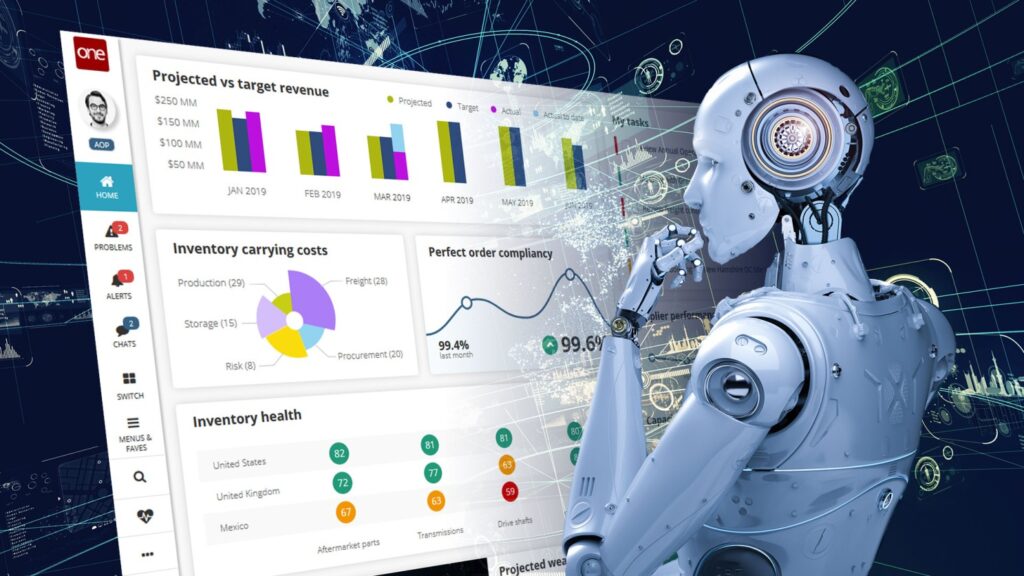A Changing Landscape
The rapid evolution of digital technology has propelled the supply chain into an era of unprecedented opportunity and competition. With the concept of a connected supply chain in full focus, leaders are posturing to maximize efficiency, quality, and customer satisfaction across increasingly complex networks of suppliers, vendors, and customers. However, this is more than a story of cutting-edge technology and data; it’s a narrative that intertwines ethical considerations with the application of Artificial Intelligence (AI), particularly within industries like manufacturing, transportation, and logistics. The AI technologies that are actively reshaping these sectors, such as neural networks, machine learning algorithms, and large language models (LLMs), offer tremendous advantages to knowledge workers looking to generate business value as efficiently as possible. Yet they also introduce ethical questions that can’t be brushed aside.
Enabling Technologies
- Neural networks function like a series of interconnected traffic lights, determining their own status by considering their neighbors to generate predictive outputs. This framework, which excels in tasks such as image recognition and natural language processing, has applications ranging from quality control in manufacturing facilities to route optimization in freight logistics. Imagine a system that can analyze thousands of product images per minute, flagging any that deviate from a predefined quality standard. The efficiency gains are tremendous, but there’s a catch: what if the model falsely flags acceptable products, causing unnecessary wastage and undermining sustainability efforts? This is where a “human in the loop” is critical to maintain a keen focus on the ethical and effective deployment of AI systems.
- Machine learning (ML) algorithms are expert pattern matching tools, unlocking the ability to detect anomalies, predict future trends, and classify text and images. They can forecast everything from production requirements in manufacturing to optimal inventory levels in warehousing. In order to provide maximum value, these models must be trained with large volumes of training data containing historical trends and patterns. However, if the data used to train these algorithms contains inherent biases or inaccuracies, the ML system may perpetuate or even amplify these errors. Herein lies the ethical challenge: how do you ensure that machine learning models make predictions and recommendations that are both accurate and unbiased, especially when human livelihoods or safety may be at stake?
- Large language models (LLMs) specialize in understanding and generating human language, making them useful in customer service chatbots, automated reporting systems, and internal copilots to assist decision makers across various facets of the supply chain. However, like ML models, these algorithms are only as ethical as the data they’ve been trained on and the design considerations that guide their interactions. A poorly designed language model could, for example, produce misleading or biased reports that influence decision-making in critical areas like resource allocation or talent acquisition. This is where thoughtful prompt engineering, with humanity at the center, is of crucial importance.

Introducing Explainable AI
The concerns above highlight why “Explainable AI” has become a rallying point for ethical AI implementation. In essence, Explainable AI aims to make the opaque transparent. It seeks to shed light on the ‘why’ and ‘how’ behind AI-driven decisions, thereby addressing several ethical issues simultaneously.
The first ethical imperative addressed by explainability is that of trust. Trust is earned, not given, and it’s particularly hard to earn when dealing with complex algorithms that are foreign to many manufacturing and logistics companies. For instance, if a neural network that manages transportation routes can share its reasoning, explaining that it prioritizes routes with lower accident rates over slightly shorter but riskier alternatives, fleet managers and drivers alike can more readily trust its recommendations, knowing that safety is a key consideration. Of course, these considerations need to be built into algorithms from the onset to ensure the correct behavior is attained.
The second ethical dimension is compliance with regulations and standards. Transparency in decision-making isn’t just an ethical concern; it’s often a legal requirement. In heavily regulated sectors like healthcare, non-compliance isn’t an option. While manufacturing and transportation face a lighter regulatory burden, there are still statutes and regulations to comply with, especially in the modern age of sustainability and ESG. When an AI system can explain its decisions, it makes it easier for organizations to adhere to industry regulations, whether those concern driver safety, environmental impact, or fair labor practices. Starting with relatively simple models, such as linear regression, and progressively adding complexity as needed is the best approach, ensuring that explainability is maintained at every step of the way.
A third critical element is quality assurance and ongoing refinement. In an environment where decisions have significant impacts on product quality and customer satisfaction, such as in the case of predicting failures in a manufacturing plan, the ability to clarify decision-making criteria is essential for any system that is implemented to augment human judgement. If a mistake occurs, you can then trace back through the decision-making process to understand the fault, whether it’s in the underlying machine data, the algorithm itself, or the human interpretation of machine-produced recommendations.
Let’s consider the ethical implications of AI in real-world supply chain scenarios. For example, in the realm of inventory management, ethical questions about sustainability and waste management come to the forefront. An explainable machine learning algorithm could outline how it factors in the shelf life of products, regional demand patterns, and the environmental impact of overproduction. This way, decision-makers are better equipped to align AI recommendations with organizational goals and ethical standards, including waste reduction and sustainability.
Wrapping Up
The push for ethical and explainable AI has become a central theme in mainstream AI discourse, and for good reason. As AI systems begin shouldering the burden of human decision making across the supply chain, It’s not enough to have tools that are powerful and efficient; they also need to be understandable and aligned with human values and ethical norms. Organizations that recognize this imperative are better positioned not only to benefit from what AI can offer but to do so in a manner that stands up to ethical scrutiny, laying the foundation for sustainable, profitable growth in this new economy.
Contact Us to learn how you can begin reaping the benefits of explainable AI across your supply chain.
About the Author
Chris Andrassy is an entrepreneur and managing partner at Astral Insights, focused on transforming data into sustainable business value on a global scale. He began his career at PwC in New York City, supporting the digital transformation of mature organizations struggling to innovate in a hyper-competitive world. After experiencing the limitations of traditional analytics practices, he decided to begin a new chapter alongside colleagues and industry veterans. His departure from New York marked the inception of Astral Insights, a Raleigh-based AI & analytics solutions firm helping mid-market and enterprise clients transform data into profit. Chris is also an investor focused on innovative technologies including synthetic biology, sustainable energy, and artificial intelligence. Outside of work, he is an avid musician, skier, traveler, and fitness enthusiast.


